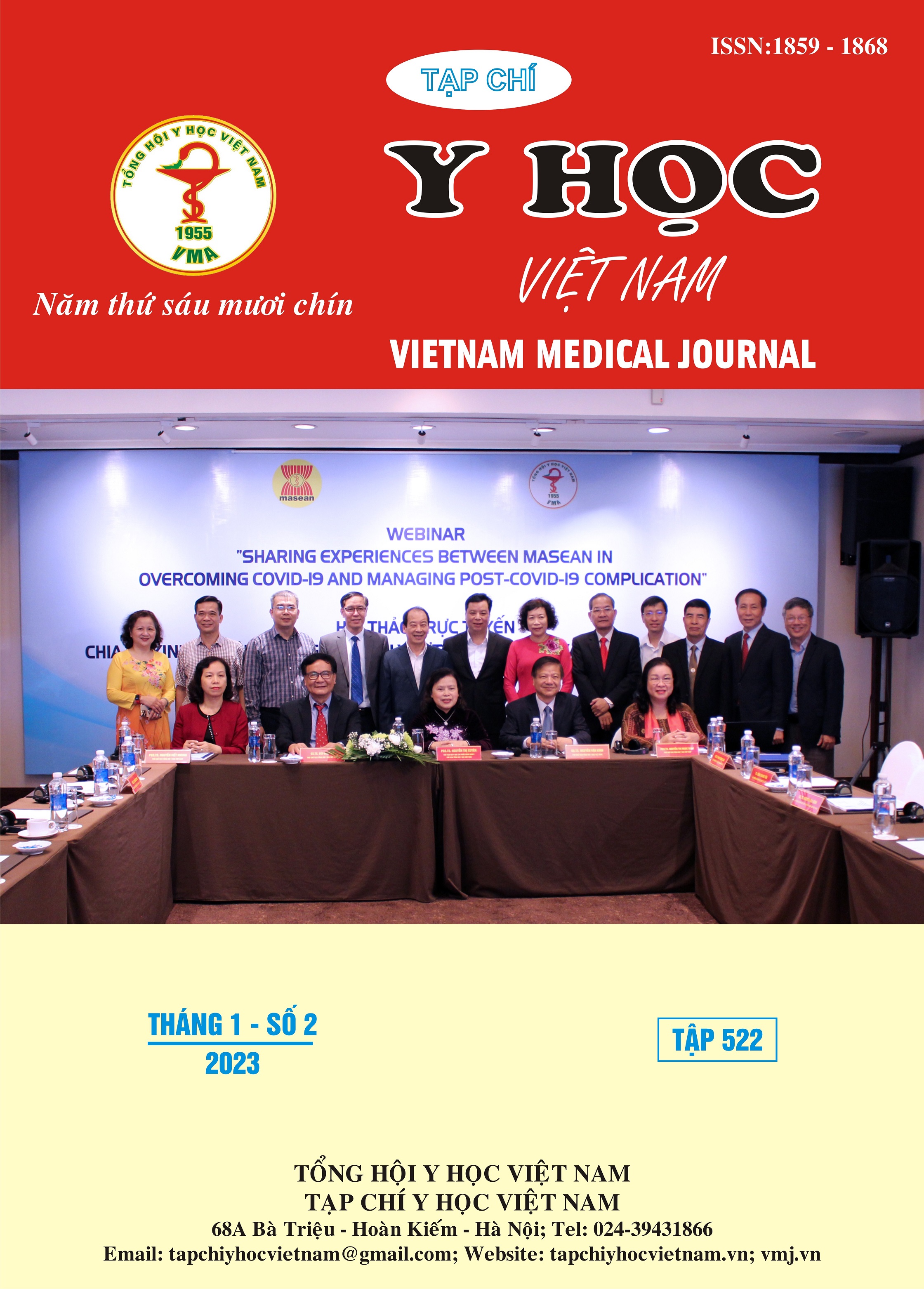THE RATE OF MOBILE COLISTIN RESISTANCE GENE (MCR) IN COMMON ENTEROBACTERIACEAE ISOLATED FROM THE ENVIRONMENT AT LIVESTOCK ESTABLISHMENTS BY MULTIPLEX PCR
Main Article Content
Abstract
Background: Currently, Enterobacteriaceae that are resistant to carbapenems are rapidly increasing, and antibiotic therapy is complicated. Colistin is a last-resort antibiotic that is used to boost the effectiveness of treatments. The risk of the rapid spread of resistance genes comes from the discovery of transversely genetic plasmids of the mobilized colistin resistance (MCR). Method: To determine the frequency of MCR genes by the method of a cross-sectional study carried out in 10 pig and chicken farms in the South of Vietnam, isolating, and growing 119 Enterobacteriaceae strains from feces, soil, and wastewater samples. Seven different variants of MCR gene were detected by the PCR multiplex method, which was a self-designed primers. Result: A total of 34.5% of Enterobacteriaceae in the study expressed the MCR gene, including 23.5% for E. coli, 9.2% for K. pneumoniae, 1.8% for Enterobacter spp, and no resistance genes were detected in Serratia marcescens or Citrobacter spp. More than 97.5% of MCR-1 genes are present, and one carries both MCR-1 and MCR-3. Discussion and conclusion: The study shows that MCR is present in a wide range of Enterobacteriaceae with 2 common genes: MCR-1 and MCR-3. In the environment of feeding facilities employing industrial feed, there is a high level of colistin resistance, which could be dangerous to human health.
Article Details
Keywords
Enterobacteriaceae; Colistin; MCR gene; multiplex PCR.
References
2. Liu Y. Y., Wang Y., Walsh T. R., et al., ‘Emergence of plasmid-mediated colistin resistance mechanism MCR-1 in animals and human beings in China: A microbiological and molecular biological study’, Lancet Infect. Dis., vol. 16, no. 2, Feb. 2016, pp. 161–168.
3. Meletis G., Skoura L., ‘Polymyxin Resistance Mechanisms: From Intrinsic Resistance to Mcr Genes’, Recent Pat. Antiinfect. Drug Discov., vol. 13, no. 3, Nov. 2018, pp. 198–206.
4. Kempf I., Fleury M. A., Drider D., et al., ‘What do we know about resistance to colistin in Enterobacteriaceae in avian and pig production in Europe?’, International Journal of Antimicrobial Agents, vol. 42, no. 5. Nov. 2013, pp. 379–383.
5. Wang Z., Fu Y., Schwarz S., et al., ‘Genetic environment of colistin resistance genes mcr-1 and mcr-3 in Escherichia coli from one pig farm in China’, Vet. Microbiol., vol. 230, no. December 2018, pp. 56–61.
6. Chuong L.V., Prachayasittikul V., Ayudhya C.I.N., et al., ‘Multiplex PCR scheme for variant plasmid mediated class C β-lactamase typing’, J. Clin. Lab. Anal., vol. 32, no. 3, Mar. 2018, p. e22298.
7. Huang X., Yu L., Chen X., et al., ‘High Prevalence of Colistin Resistance and mcr-1 Gene in Escherichia coli Isolated from Food Animals in China’, Front. Microbiol., vol. 8, no. 4, Apr. 2017, doi: 10.3389/FMICB.2017.00562.
8. Malhotra-Kumar S., Xavier B. B., Das A.J ., et al., ‘Colistin resistance gene mcr-1 harboured on a multidrug resistant plasmid’, Lancet Infect. Dis., vol. 16, no. 3, Mar. 2016, pp. 283–284.


